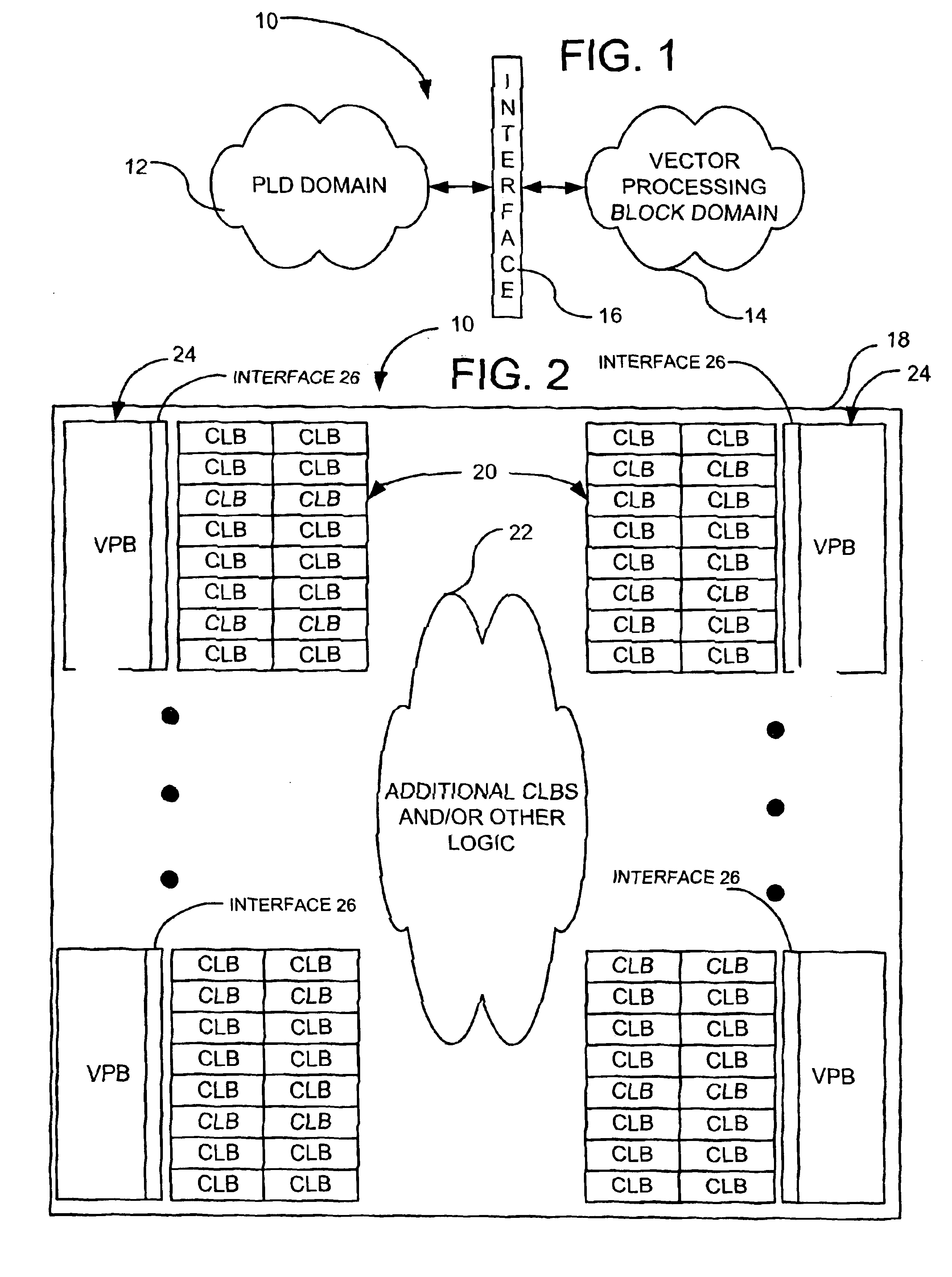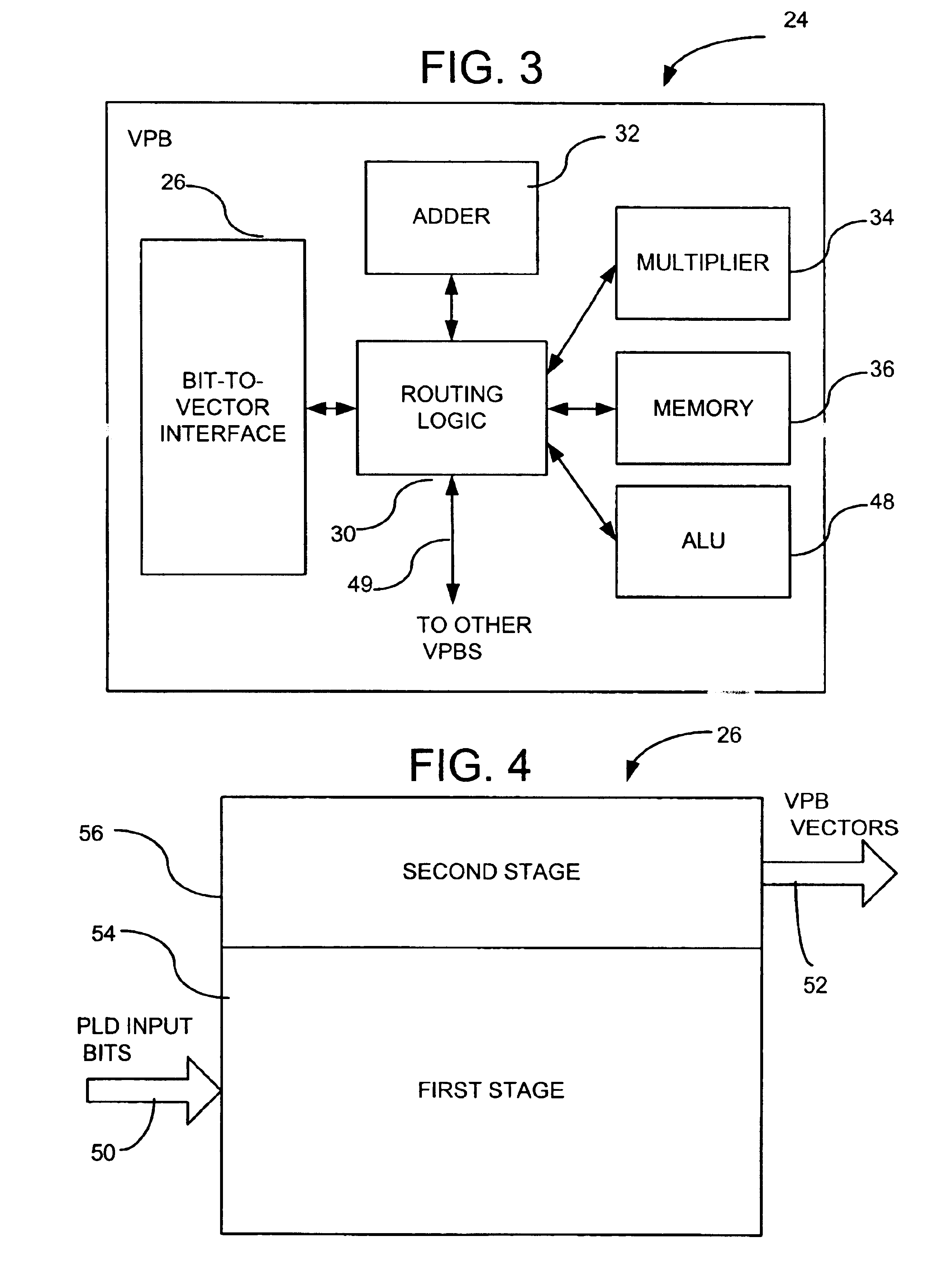Converting bits to vectors in a programmable logic device
a programmable logic and bit vector technology, applied in the direction of computation using denominational number representation, pulse technique, instruments, etc., can solve the problem that components place a significantly larger burden on pld routing resources
- Summary
- Abstract
- Description
- Claims
- Application Information
AI Technical Summary
Benefits of technology
Problems solved by technology
Method used
Image
Examples
Embodiment Construction
FIG. 1 shows a high-level diagram of a PLD 10 in accordance with the invention including a PLD domain 12, a vector domain 14, and an interface 16 between the two domains 12 and 14. The PLD may be one of many types of programmable devices, such as a field programmable gate array (FPGA). The PLD domain may include conventional fine-grain logic, memory and routing resources where signals are switched and routed on a bit-by-bit basis. Such bit-by-bit manipulation is termed unordered because the bits are not arranged in a predetermined order throughout the domain. The vector domain 14 may include course-grain logic blocks (also referred to herein as vector processing blocks, or VPBs) that perform functions on digital words (integer operands) that include multiple bits grouped together (e.g., 16, 32, 64 bits, etc) in a predetermined order throughout the domain. These words of ordered bits are referred to as vectors. In the vector domain 14, groups of wires are routed together as a vector ...
PUM
 Login to View More
Login to View More Abstract
Description
Claims
Application Information
 Login to View More
Login to View More - R&D
- Intellectual Property
- Life Sciences
- Materials
- Tech Scout
- Unparalleled Data Quality
- Higher Quality Content
- 60% Fewer Hallucinations
Browse by: Latest US Patents, China's latest patents, Technical Efficacy Thesaurus, Application Domain, Technology Topic, Popular Technical Reports.
© 2025 PatSnap. All rights reserved.Legal|Privacy policy|Modern Slavery Act Transparency Statement|Sitemap|About US| Contact US: help@patsnap.com



